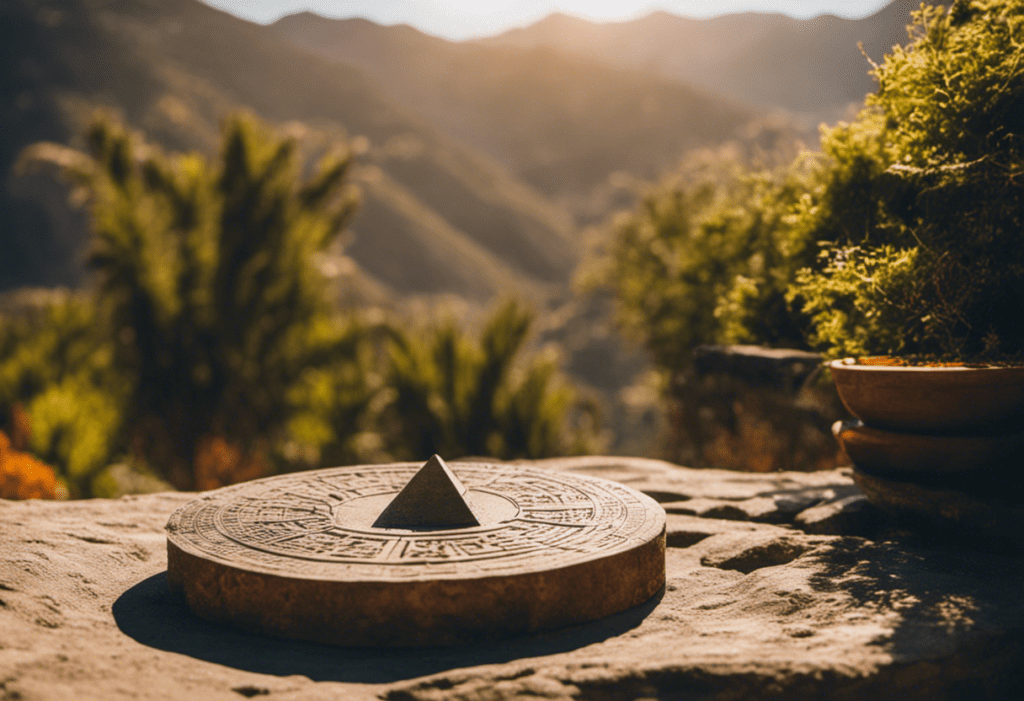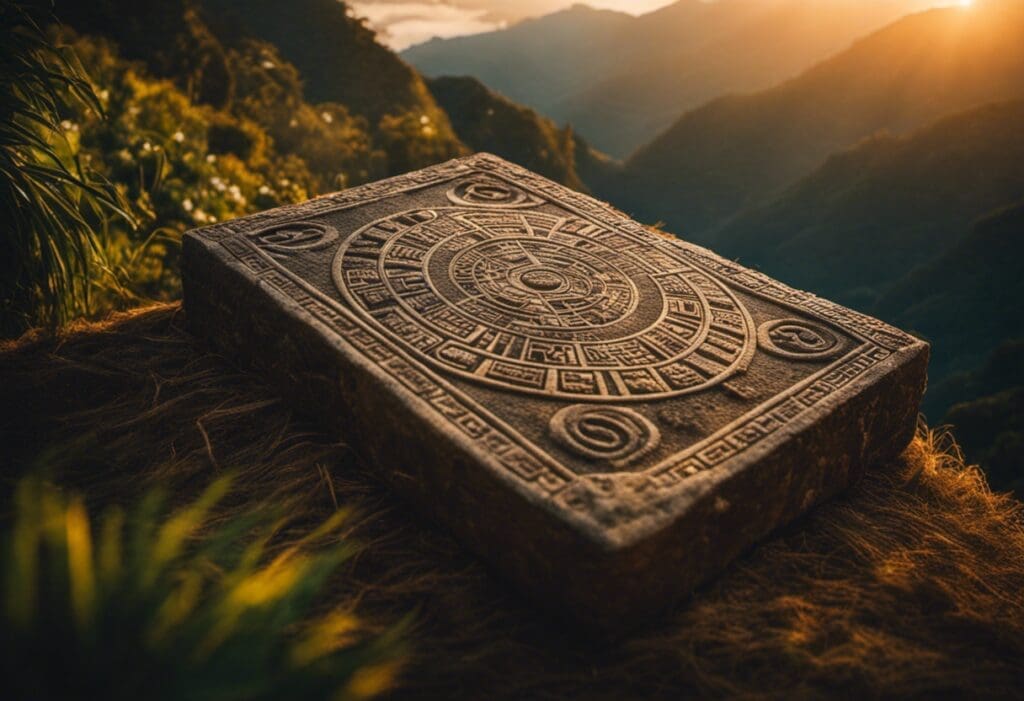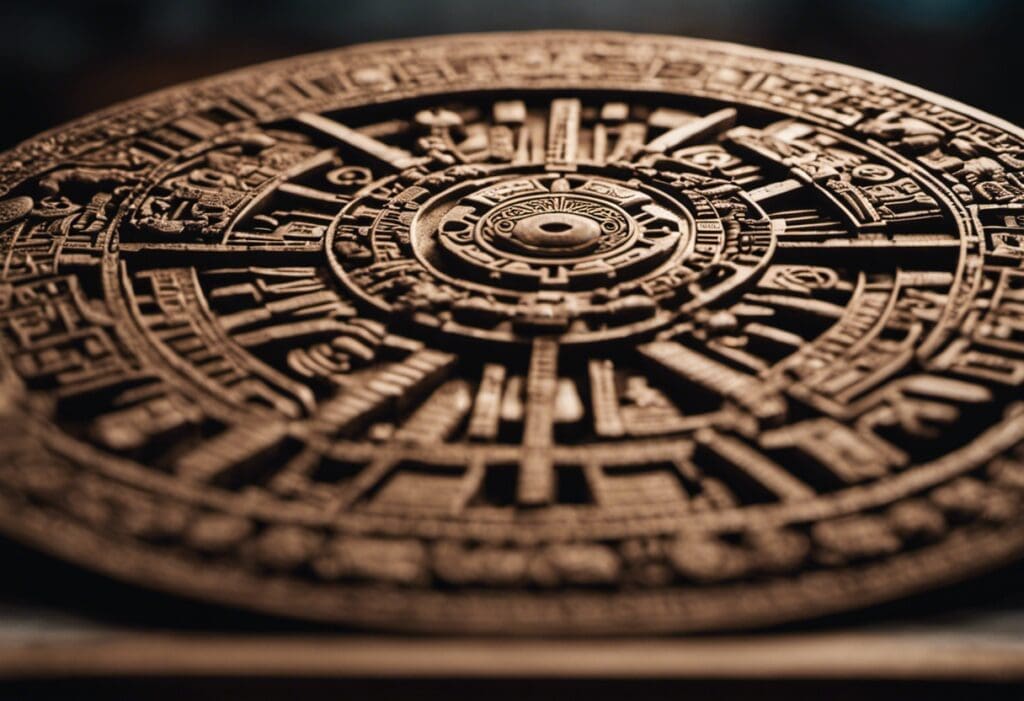Step into the realm of ancient civilizations and unlock the secrets of the Inca Calendar, a mesmerizing masterpiece that continues to resonate throughout history.
Delve into the precision and complexity of this remarkable timekeeping system, and explore its profound impact on agriculture, spirituality, celestial observations, and modern-day timekeeping.
Join us on a journey of rediscovery as we uncover the cultural legacy and ancient wisdom embedded within the Inca Calendar, forever leaving its historical echoes etched in our collective consciousness.
Key Takeaways
- The Inca calendar exemplified remarkable precision and complexity.
- It played a vital role in daily life, tracking the passage of time and helping determine optimal planting and harvesting times.
- The calendar incorporated advanced agricultural techniques and celestial navigation, allowing the Inca people to maximize efficiency and productivity in agriculture.
- The combination of the Inca calendar and sophisticated water management systems helped optimize agricultural practices and maximize agricultural outputs.
The Inca Calendar: A Masterpiece of Precision and Complexity
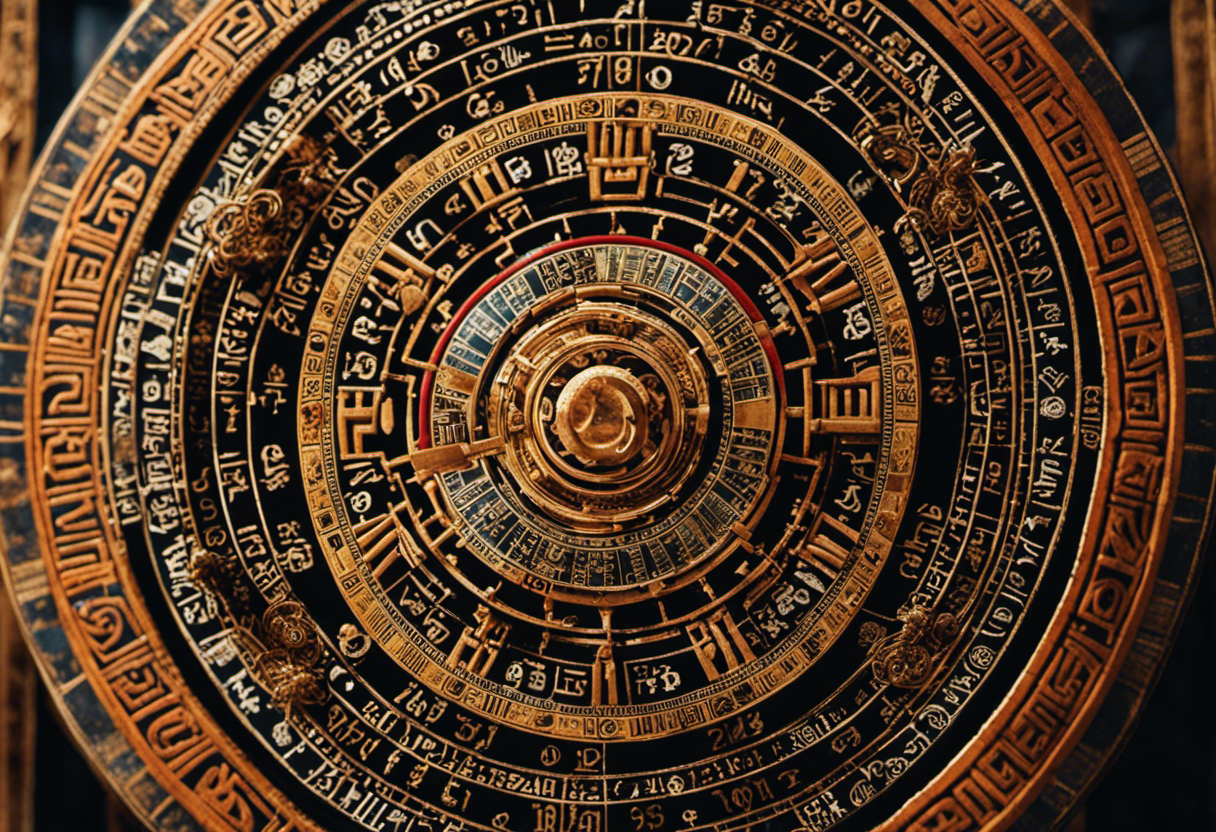

The Inca calendar exemplifies the remarkable precision and complexity achieved by the ancient civilization in their timekeeping system. Through their advanced agricultural techniques and celestial navigation, the Inca people were able to develop a calendar that not only tracked the passage of time but also played a vital role in their daily lives.
Agriculture was the backbone of Inca society, and their calendar was closely tied to their farming practices. The Inca people were skilled in terrace farming, which involved constructing steps on the mountainside to create flat areas for cultivation. This method allowed them to maximize their agricultural output and sustain their population. The Inca calendar, with its precise tracking of seasons, lunar cycles, and celestial events, enabled them to determine the best times for planting, harvesting, and performing important agricultural rituals.
Additionally, the Inca calendar played a crucial role in celestial navigation. The Inca civilization was highly knowledgeable about the movement of celestial bodies, and their calendar incorporated this knowledge. By observing the position of the sun, moon, and stars, the Inca people were able to navigate across vast distances, establish trade routes, and plan their journeys effectively.
Agricultural Practices and the Inca Calendar: Maximizing Efficiency and Productivity
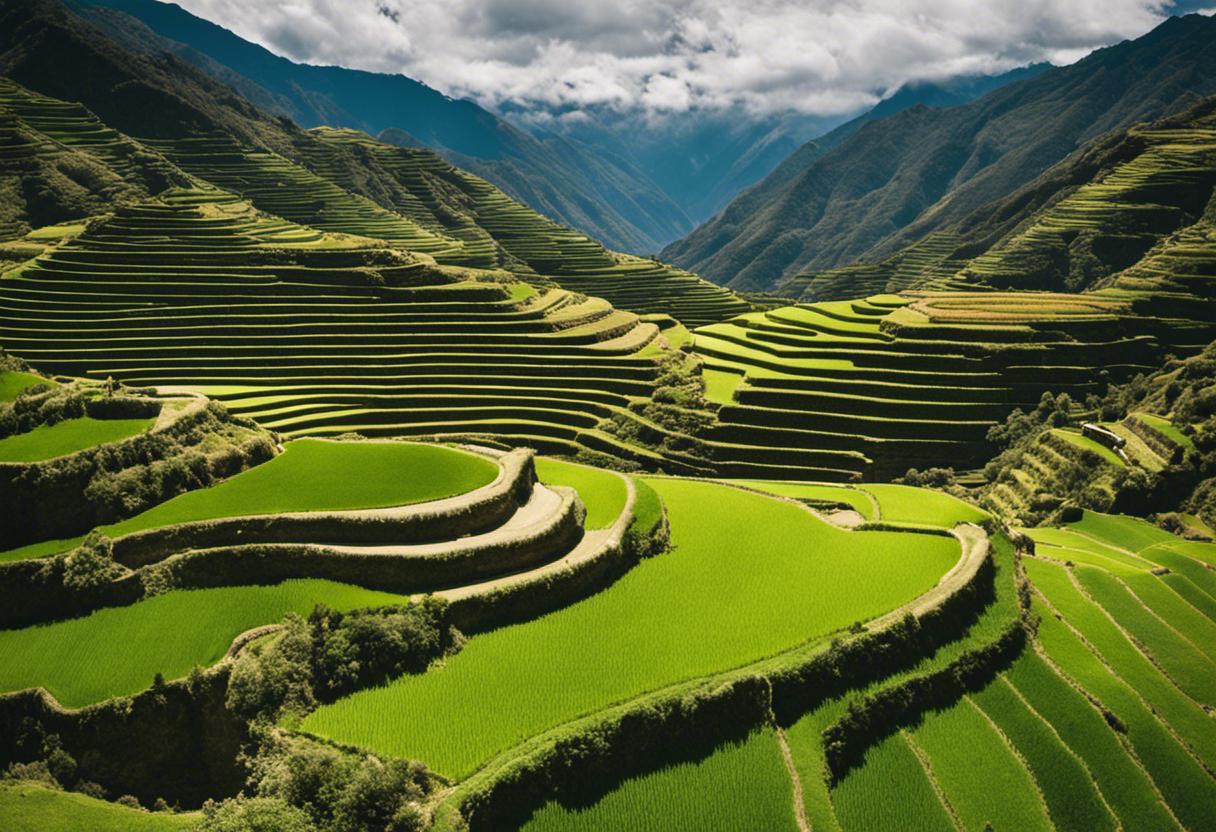

The Inca calendar played a crucial role in the agricultural practices of the Inca civilization, allowing them to maximize efficiency and productivity. One key aspect was the seasonal crop planting, which was guided by the calendar’s knowledge of the changing seasons.
Additionally, the Inca implemented crop rotation techniques to maintain soil fertility and prevent depletion. Moreover, their advanced water management systems, such as irrigation canals and terracing, further enhanced agricultural productivity.
These practices demonstrate the Inca’s deep understanding of the natural environment and their ability to adapt and thrive in a challenging landscape.
Seasonal Crop Planting
One significant aspect of the Inca calendar’s impact on agricultural practices was its ability to precisely determine optimal planting times for seasonal crops. The Inca people recognized the importance of crop diversity and agricultural sustainability, and their calendar played a crucial role in achieving these goals.
Here are three ways in which the Inca calendar facilitated seasonal crop planting:
-
Identifying favorable weather patterns: The Inca calendar allowed farmers to determine the best time to plant each crop based on weather patterns. By aligning their planting schedules with the calendar, they could avoid unfavorable conditions such as excessive rainfall or frost.
-
Optimizing resource allocation: The Inca calendar helped farmers allocate their resources more efficiently. By knowing when each crop should be planted, they could plan their labor and land usage accordingly, maximizing productivity.
-
Promoting crop rotation: The Inca calendar encouraged crop rotation, which is essential for maintaining soil fertility and preventing the spread of pests and diseases. By following the calendar’s guidelines, farmers could ensure that different crops were planted in the same fields each season, promoting sustainable agricultural practices.
The Inca calendar’s ability to determine optimal planting times for seasonal crops significantly contributed to the efficiency and productivity of Inca agricultural practices.
Crop Rotation Techniques
By integrating crop rotation techniques with the guidance of the Inca calendar, farmers were able to optimize the productivity and efficiency of their agricultural practices. Crop rotation is a sustainable farming method that involves the systematic planting of different crops in a specific sequence over time. The Inca calendar played a crucial role in determining the appropriate timing and rotation of crops based on the seasonal changes and agricultural needs.
This method helped to maintain soil fertility, minimize pest and disease outbreaks, and maximize crop yield. The Inca people understood the importance of diversifying their crops and allowing the soil to recover and replenish nutrients naturally. By following crop rotation techniques guided by the Inca calendar, they were able to sustain their agricultural practices for generations, ensuring a steady supply of food for their civilization.
Water Management Systems
Water management systems in conjunction with the Inca calendar allowed for the optimization of agricultural practices, enhancing efficiency and productivity in the Inca civilization.
The Inca people developed sophisticated irrigation techniques to effectively distribute water throughout their agricultural lands. They built canals and terraces to capture and redirect water from rivers and rain, ensuring a steady supply for their crops.
Additionally, the Inca implemented water conservation practices such as the use of reservoirs to store excess water during the rainy season for use during dry periods. This enabled them to sustain their agriculture year-round, even in areas with limited rainfall.
The combination of these water management systems and the Inca calendar’s precision in predicting weather patterns allowed for strategic planning and maximization of agricultural outputs.
The Inca Calendar’s Role in Spiritual Ceremonies and Rituals
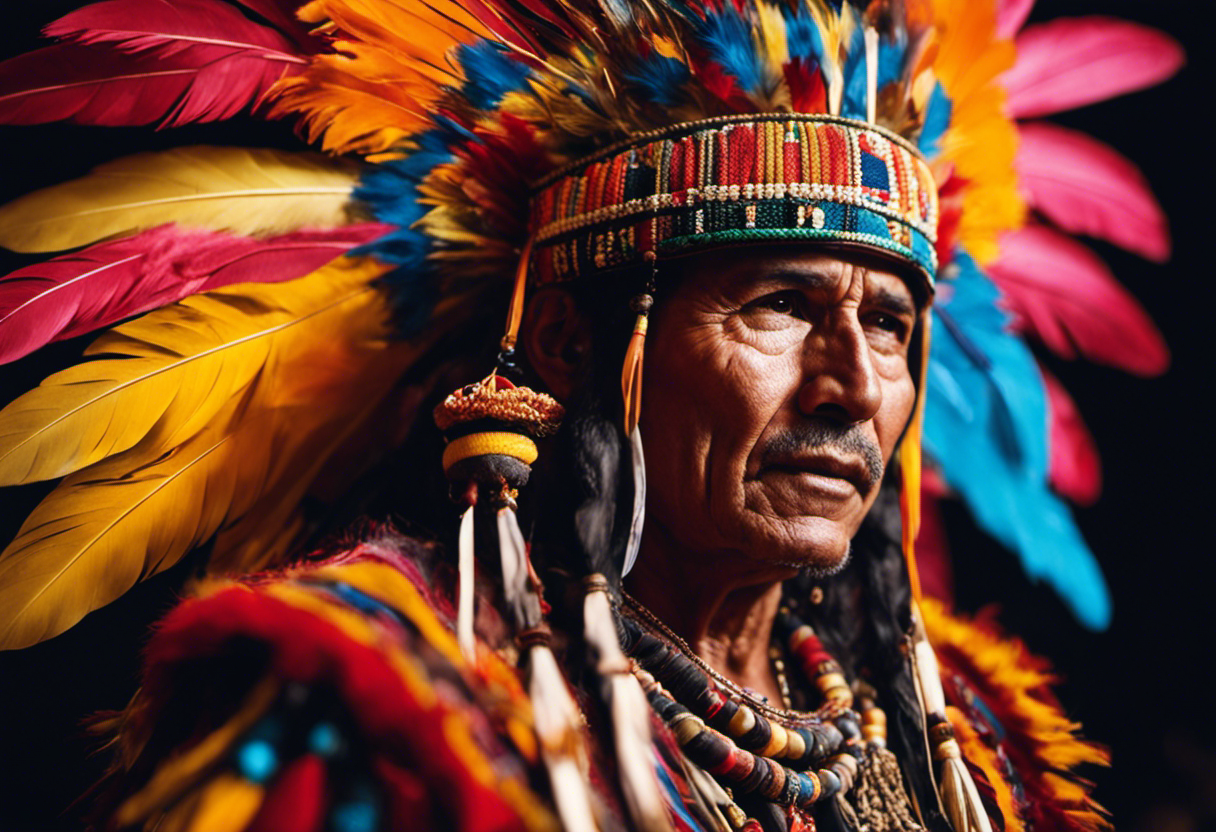

The Inca people regarded the calendar as an integral part of their spiritual ceremonies and rituals. The Inca calendar played a significant role in healing practices and had a deep connection to celestial events. The Incas believed that time was cyclical, and their calendar was designed to align with the movements of the sun, moon, and stars.
Inca spiritual ceremonies often revolved around agricultural activities, such as planting and harvesting, which were crucial for their survival. These ceremonies were based on the Inca calendar, as it guided them in determining the most auspicious times for these activities. The calendar also played a vital role in predicting weather patterns, ensuring successful harvests, and maintaining the overall well-being of the community.
Furthermore, the Inca calendar’s connection to celestial events was deeply intertwined with their spiritual beliefs. The Incas worshiped the sun as their most important deity, and they believed that the sun controlled all aspects of life. The movements of the sun, moon, and stars were carefully observed and incorporated into their rituals and ceremonies, as they believed that these celestial events held profound spiritual significance.
Celestial Observations and the Inca Calendar: Understanding the Universe
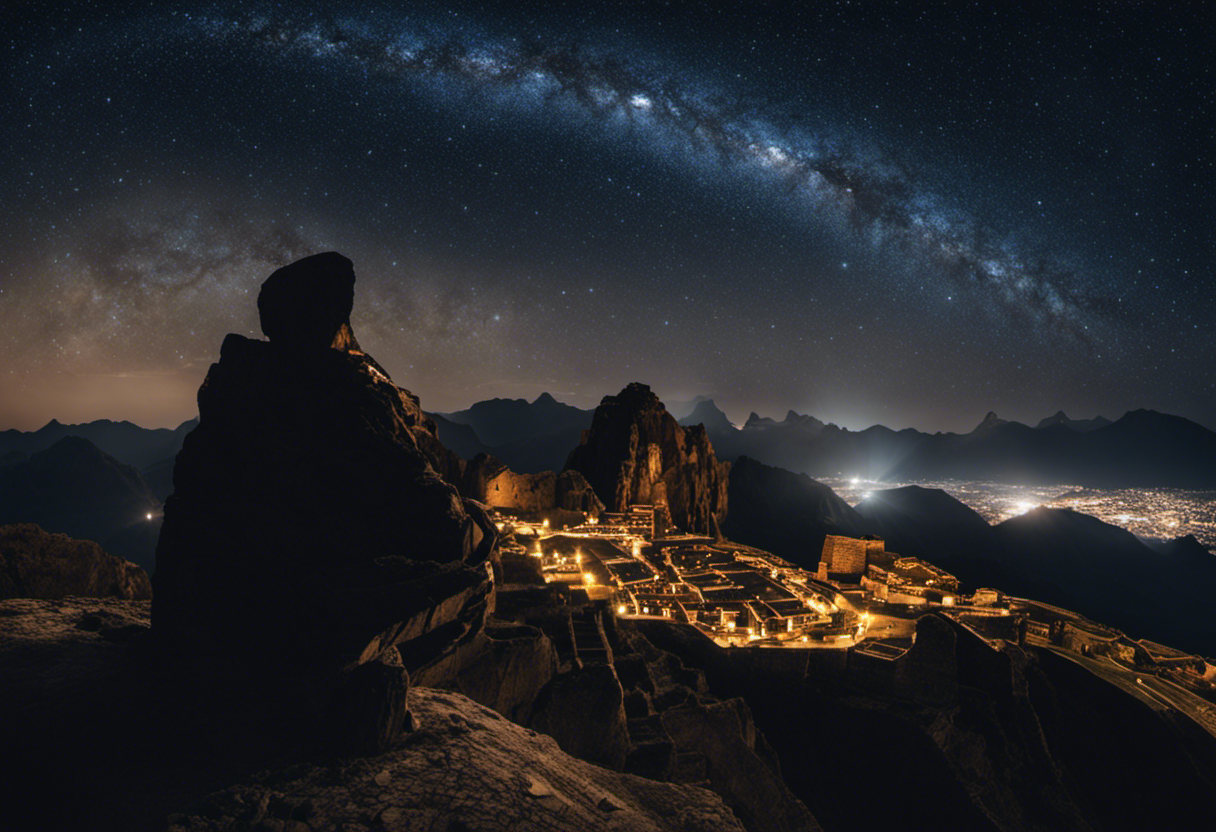

How did celestial observations contribute to the Inca’s understanding of the universe and the development of their calendar system?
The Inca civilization had a deep appreciation for celestial navigation and recognized the astronomical significance of the celestial bodies. Their understanding of the universe and the development of their calendar system were greatly influenced by their observations of the stars, the sun, the moon, and other celestial phenomena.
Here are three ways in which celestial observations shaped their understanding:
-
Astronomical Alignment: The Inca carefully observed the movements of celestial bodies and aligned their architectural structures with specific celestial events. This allowed them to track the solstices and equinoxes, helping to determine important agricultural and ceremonial dates.
-
Celestial Navigation: The Inca developed advanced techniques for celestial navigation, using the position of the stars to guide their travels. This skill enabled them to navigate across vast distances and establish trade routes throughout their empire.
-
Cosmological Beliefs: The Inca believed that the celestial bodies were deities and played an integral role in their cosmological beliefs. They associated specific celestial events, such as eclipses, with important myths and rituals, further emphasizing the celestial significance in their culture.
The Inca Calendar’s Influence on Modern-Day Timekeeping


The Inca calendar holds immense cultural significance and its influence can still be seen in modern-day timekeeping practices.
The adaptation of ancient Inca practices into our current calendar system highlights the lasting impact of their calendar.
Cultural Significance of Inca Calendar
The Inca Calendar’s influence on modern-day timekeeping is evident in various systems and practices used today. The cultural practices of the Inca civilization have had a lasting impact on how we measure and keep track of time.
-
Number System: The Inca Calendar’s numerical system, based on the concept of base 10, is still widely used today. This system forms the foundation for our modern-day numbering system.
-
Agricultural Practices: The Inca Calendar was closely tied to agricultural cycles, helping the Inca people to determine the best times for planting and harvesting crops. Today, many farmers still rely on the knowledge of seasonal cycles to optimize their agricultural practices.
-
Astronomical Observations: The Inca Calendar was based on astronomical observations, with the sun, moon, and stars playing crucial roles in determining the passage of time. This influence can still be seen in modern astronomical practices and the use of celestial bodies for timekeeping purposes.
Adaptation of Ancient Practices
The Inca civilization had a complex calendar that was based on astronomical observations and agricultural cycles. This calendar played a crucial role in their society, guiding agricultural activities and religious ceremonies. Today, some aspects of the Inca calendar are still used in modern timekeeping systems. For example, the concept of dividing the year into 12 months and the use of a lunar calendar are practices that can be traced back to the Inca civilization.
Furthermore, the Inca’s emphasis on the solstices and equinoxes has influenced the way we mark important dates in our calendar, such as the summer and winter solstices. The cultural impact of the Inca calendar can still be seen in the way we measure and organize time today.
The Inca Calendar’s influence on modern-day timekeeping is evident through the incorporation of ancient practices into contemporary systems.
Cultural Legacy: How the Inca Calendar Shaped Traditions and Beliefs
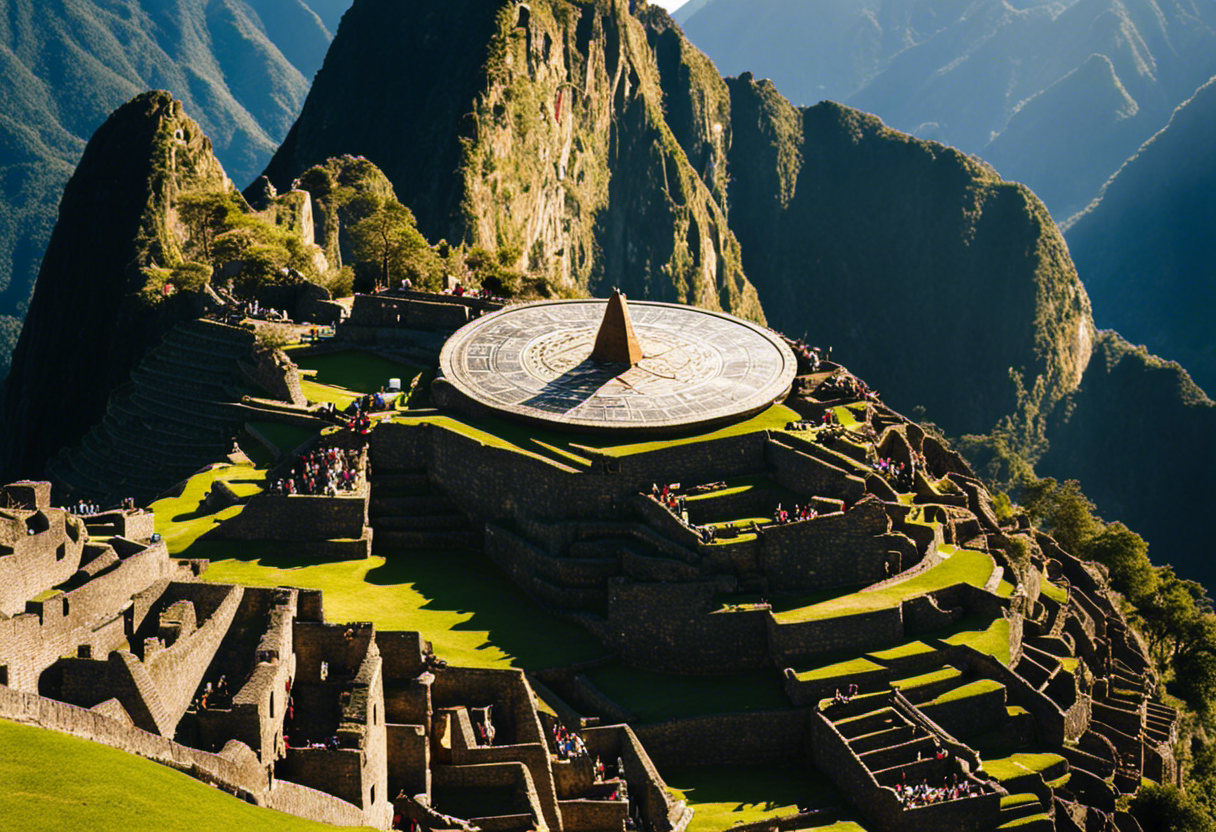

The profound influence of the Inca calendar on cultural practices and spiritual beliefs is evident in the rich tapestry of traditions passed down through generations. The Inca calendar played a pivotal role in shaping the cultural legacy of the Inca civilization, leaving a lasting impact on their traditions and beliefs.
-
Cultural Preservation: The Inca calendar served as a powerful tool for cultural preservation. It not only marked the passage of time but also provided a framework for organizing and celebrating important cultural events and rituals. The calendar acted as a guide for the Inca people, ensuring that their cultural traditions and practices were perpetuated and passed down from one generation to the next.
-
Ritual Practices: The Inca calendar influenced the ritual practices of the Inca people. The calendar was intricately connected to their religious beliefs and played a crucial role in determining the timing and nature of various rituals and ceremonies. Whether it was agricultural rituals to ensure a bountiful harvest or celestial ceremonies to honor the gods, the Inca calendar provided a structure and framework for these sacred practices.
-
Spiritual Beliefs: The Inca calendar had a profound impact on the spiritual beliefs of the Inca civilization. It was believed to be a sacred instrument that allowed the Inca people to connect with the divine and understand the cosmic forces at play. The calendar provided insights into the cyclical nature of time and the interconnectedness of the physical and spiritual realms. This understanding shaped their spiritual beliefs and influenced their worldview, emphasizing harmony and balance with nature and the cosmos.
Rediscovering the Inca Calendar: Uncovering Ancient Wisdom and Knowledge
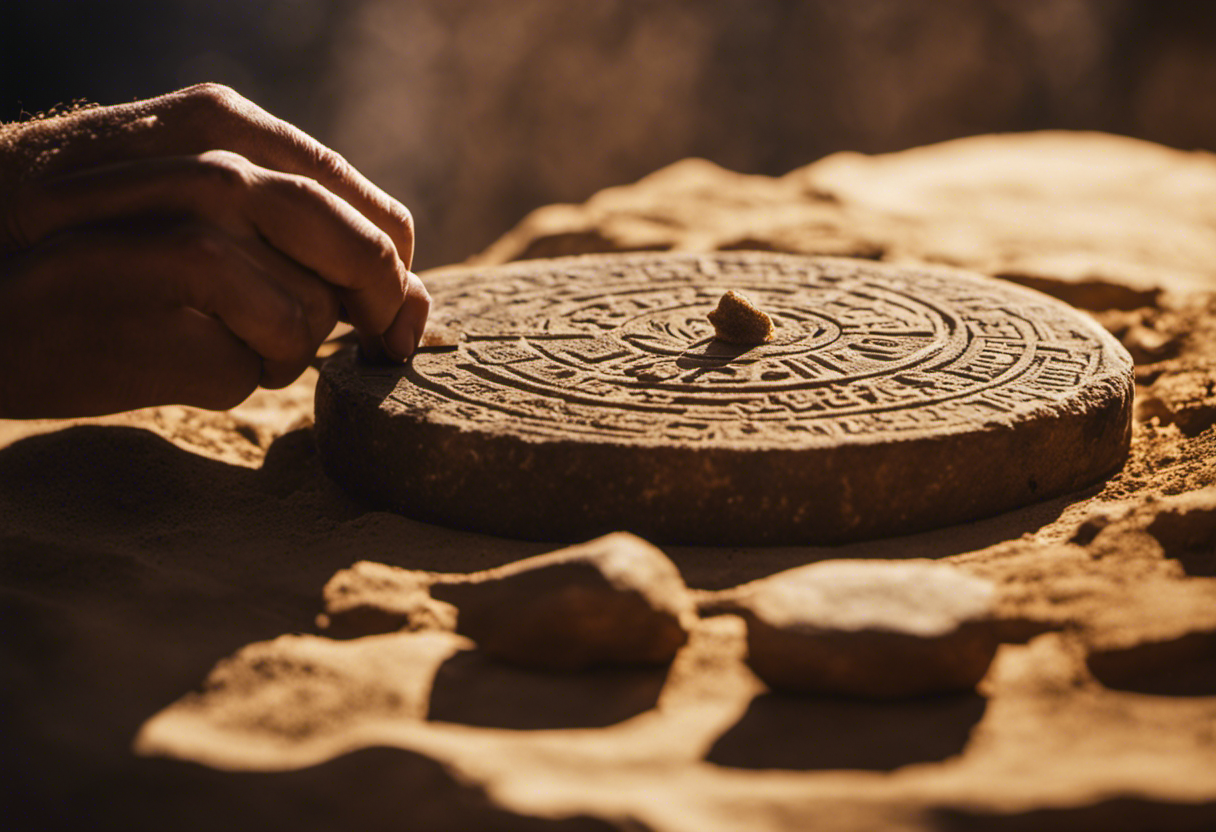

One way to delve into the depths of ancient wisdom and knowledge is by rediscovering the Inca calendar through extensive research and analysis. Unearthing ancient traditions and deciphering astronomical connections can provide valuable insights into the Inca civilization’s understanding of time, the cosmos, and the natural world.
The Inca calendar, known as the ‘quipu,’ was a complex system that combined mathematical calculations, astronomical observations, and cultural beliefs. It was used not only to track time but also to coordinate agricultural activities, plan religious rituals, and govern the empire. However, much of the knowledge surrounding the Inca calendar was lost with the Spanish conquest and the subsequent destruction of Inca records.
In recent years, scholars have made significant progress in deciphering the Inca calendar. By studying surviving quipus, analyzing archaeological findings, and comparing them with ethnohistorical accounts, researchers have been able to reconstruct aspects of the calendar system. This has led to a better understanding of the Inca’s relationship with the stars, the solstices, and the equinoxes.
The rediscovery of the Inca calendar has not only shed light on their advanced astronomical knowledge but has also provided insights into their cultural practices and rituals. It has revealed the importance of celestial events in their daily lives and how they integrated their understanding of the cosmos into their religious and agricultural practices.
Conclusion
In conclusion, the Inca calendar’s precision and complexity had a lasting impact on various aspects of Inca society.
Its role in agricultural practices maximized efficiency and productivity, while its connection to spiritual ceremonies and celestial observations deepened the understanding of the universe.
Furthermore, the Inca calendar’s influence on modern-day timekeeping is evident. For example, the synchronization of the solar and lunar cycles in the calendar paved the way for the development of accurate timekeeping systems.
Overall, the Inca calendar’s cultural legacy continues to shape traditions and beliefs, showcasing the ancient wisdom and knowledge of the Inca civilization.

